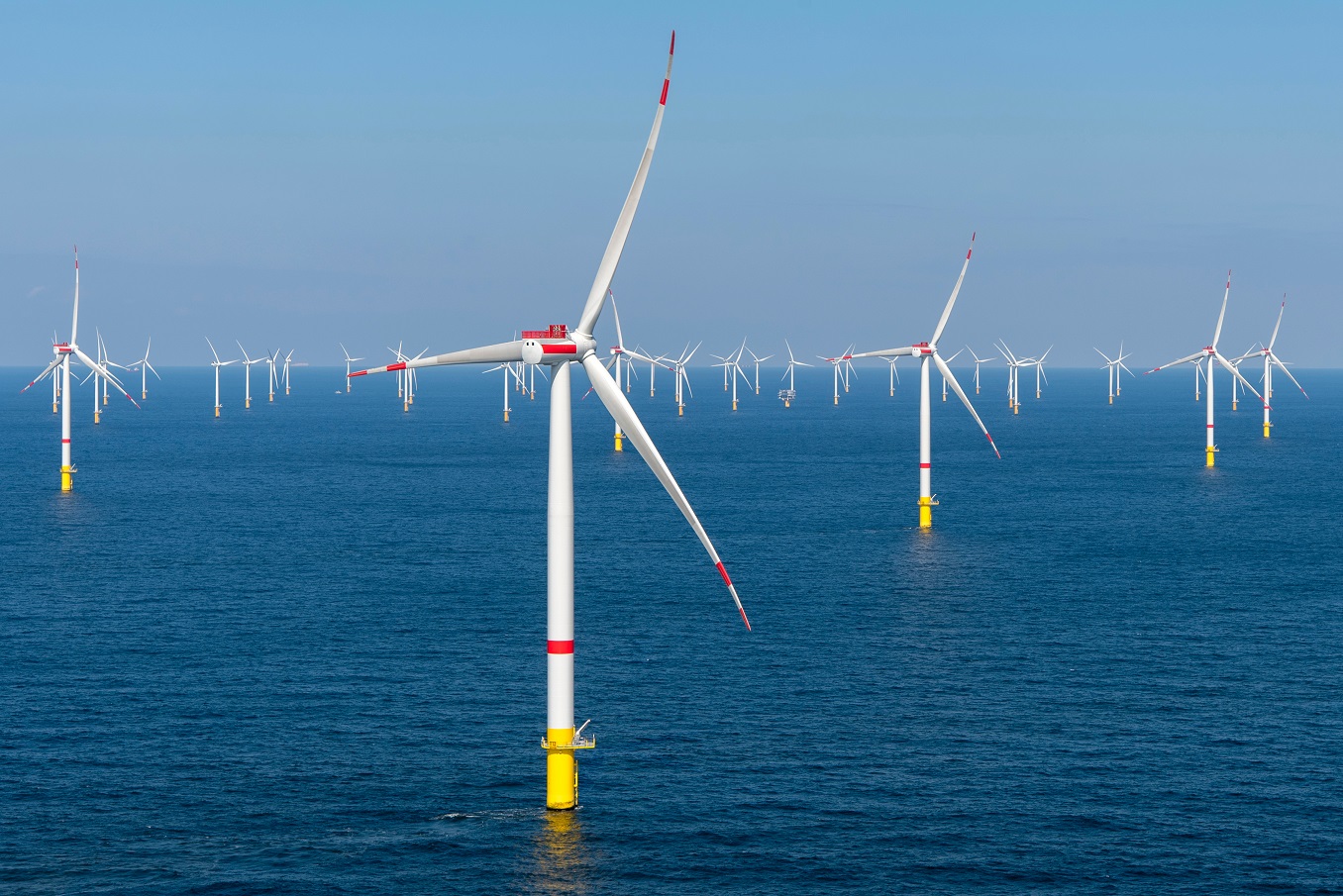Vietnam’s renewable energy (RE) development is ambitious. As the Ministry of Industry and Trade (MOIT) proposes the latest development direction to the Prime Minister, anticipates establishing two cross-regional RE industrial and service centers located in the Northern and South Central to Southern areas, as focal points for industrial development. It details the strengths and characteristics of each region and mandates all relevant authorities to complete the development plans by 2027.
In the Northern region, these focus on Hai Phong City, Quang Ninh Province, and Thai Binh Province. The offshore wind power is projected to reach a capacity of 2,000 MW, while onshore and nearshore wind power could achieve up to 500 MW. The development direction also emphasizes constructing new manufacturing facilities for RE equipment and new energy production. It also aims to enhance port operations and provide ancillary services for the construction, operation, and maintenance of these sites. Additionally, plans include the establishment of low-carbon emission green industrial parks, RE research centers, and training institutions.

In the Northern region, the offshore wind power is projected to reach a capacity of 2,000 MW. (Photo: Shutterstock)
Vietnam's 8th National Power Development Plan (PDP8) estimated the Northern region's electricity generation capacity must be stable to grow by approximately 8.8% annually from 2021 to 2030. To prevent power shortages, especially during peak heat waves, besides ensuring the timely completion of coal-fired and hydroelectric power projects, there is a need to promote the development of RE.
Hai Phong Province and Quang Ninh Province are hubs for shipbuilding and large-scale offshore equipment manufacturing, MOIT plans to facilitate technology transfer and localization of RE equipment, especially offshore wind power in this region.
The RE development plan for South Central to Southern Vietnam is like the Northern region but is expected to have a larger capacity. The offshore wind power capacity is estimated to reach between 2,000-2,500 MW, while onshore and nearshore wind power could achieve 1,500-2,000 MW. The Ninh Thuan, Binh Thuan, Ba Ria-Vung Tau, and Ho Chi Minh City of that region would be the center of attention.
South Central to Southern Vietnam can be further distinguished. The South Central region is considered as the destination for RE development, especially in Ninh Thuan and Binh Thuan provinces. Since the power grid in the area is relatively complete, and the seafloor is suitable for installing fixed foundations for offshore wind turbines, expected that the total RE generation capacity in this area will reach 12,500 MW (excluding hydropower) and offshore wind power is estimated at around 2,000 MW by 2030.
Ninh Thuan and Binh Thuan provinces located in the South Central region, are close to the electricity load center of the Southeast area and already have a plan to construct a 500kV transmission network by 2030. This sound network will help to connect the entire southern region and ensure the distribution of all generated electricity.
Surrounded by the Central Highlands, South Central coast, and Southern region, Ninh Thuan and Binh Thuan provinces not only have a stable power transmission grid, the port system also is being modernized and updated capacity for international ships anchorage, ensuring an advantage for import and export of solar and wind power equipment.
Binh Thuan Province in the South Central region has long been the preferred destination for both domestic and international RE investors and recently has attracted significant investment from large RE groups from Denmark and the UK.
![]()
On December 3rd, Vietnamese Prime Minister Pham Minh Chinh met with Robert Helms, Member of the board of the CIP Group, and Ian Hatton, Chairman of EE Group. (Photo: baochinhphu.vn)
Robert Helms, Member of the Board of Directors of CIP Group (Copenhagen Infrastructure Partners), mentioned that the group has developed several offshore wind power projects in the U.S., Taiwan, and South Korea… and plans to invest more than 110 billion USD in the RE sector by 2030. The group plans to invest about 10.5 billion USD in La Gan offshore wind power project in Binh Thuan province, with a total capacity of 3.5GW, once all necessary procedures are completed.
Ian Hatton, Chairman of the UK-based EE Group (Enterprize Energy), indicated that the group's focus is on marine natural resource extraction and energy development. They are collaborating with Societe Generale (France), Vestas (Denmark), and Offshore Design Engineering, ODE (UK) on the Thang Long Offshore Wind Complex in Binh Thuan province. This complex project comprises two parts: TLW (Thang Long Wind Farm), which will connect to Vietnam’s national grid with a capacity of 3,400 MW and a total investment of 11.9 billion USD; and TLW2 will be used to produce hydrogen energy for export, with a total capacity of 2,000 MW and a total investment of 5 billion USD. Both projects are expected to be completed and operated by 2029.
The Southern Key Economic Zone of the southern area is considered a strategic town for economic development of the nation and is also a key area for electricity consumption in South Vietnam. Many shipyards have been set up in Ho Chi Minh City and Ba Ria-Vung Tau Province in the region to facilitate the import and export of RE equipment.








